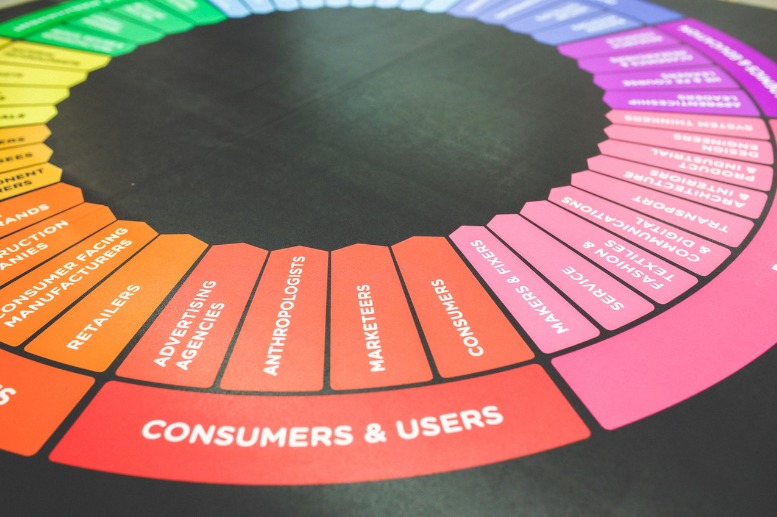Communications technology has become diverse in the past century and this has become very obvious in marketing. Marketers now have many communication channels at their disposal. They include email, blogs, social media apps, TV, etc.
This has helped them create greater awareness of their services. It has also allowed them to reduce marketing costs and increase efficiency. The use of so many channels, though, has its risks. Marketers risk creating a mixed brand image in the minds of their potential customers.
This is where integrated marketing comes in. It involves using strategies to create a consistent brand image across all channels. Marketers may manage their marketing strategies themselves. But, many people employ Integrated marketing agencies to do the managing. Integrated marketing agencies are groups that specialize in taking care of these strategies for clients.
The advantage of this is in the fact that these are experts in integrated marketing. They help to manage marketing strategies to maximum effect.
Recent Advancements in Integrated Marketing
Integrated marketing is always evolving. Information and communication technology also consistently grows. As a result, new strategies and avenues of integrated marketing also continue to emerge. Integrated Marketing firms need to follow these advancements and take advantage of them.
Here, we will go over some of these recent advancements.
1. Chatbots/Intelligent Virtual Assistants (IVAs)
In the last century, customer service automation has become a thing. Chatbot technology was a major form of such automation. However, chatbots were simple rule-based programs. They could only respond to routine FAQs from customers. But, IVAs have recently taken this technology to another level by using AI technology.
Intelligent Virtual Assistants are AI-enabled chatbots capable of replacing actual customer care assistants. IVAs combine analytics and cognitive computing to generate responses tailored to customer queries. Natural language processing enables them to communicate in a human-like manner.
Marketing agencies and other corporations have begun to make use of IVAs. For instance, the Bank of America rolled out its IVA named Erica in 2018. It has performed amazingly so far. In time, Erica will be able to make payments and provide transaction records. It will even be able to analyze habits and offer financial advice.
In the prevailing years, many other banks have also begun to turn to IVAs. Though, for now, most banking IVAs are only available on their mobile apps. But, many IVAs can operate on social media platforms like Facebook and Twitter. Such IVAs are juicy options for marketers since most people are social media users.
But, IVAs are quite expensive to create and maintain. For this reason, most businesses hire existing ones. In the future, IVAs will become more advanced and incorporate more capacities. That will mean a better customer experience and marketers will get more bang for their buck.
2. Native Advertising
This is another recent development in integrated marketing. It involves advertising your brand through sponsored content hosted on another’s platform. These platforms may be social media feeds, blog posts, or websites. The content may be ads in social media feeds or recommended content on websites. Promoted listings on search engines are also another such content.
The idea of native advertising is to make sure an ad doesn’t look too much like an ad. For instance, recommended content on a webpage must look like it is part of the flow of the page. But, at the same time, there must be telltale signs that will let the reader know he’s looking at an ad. This is the paradox of native advertising.
Though it is a new integrated marketing strategy, it has gained popularity. This is due to its many advantages over other usual display ads that annoy customers. For one, native ads are more engaging and arouse more interest in customers. They also have higher click-through rates and are better at convincing people to make purchases.
But, native advertising has its drawbacks. Creating engaging content consumes time and labor, and there may sometimes be deception. Customers may get misled about the nature of the ad. Because of this, the Federal Trade Commission has published the Native Advertising Guide. It is a manual that instructs native advertisers on what label to use to avoid deceiving readers.
But, despite its drawbacks, native advertising is still a very effective marketing strategy. Projections show that it will continue to gain more traction.
3. Influencer Marketing
Influencer marketing is a kind of social media marketing. It relies on individuals known as influencers. These people have considerable social influence, usually on social media platforms like Instagram.
An Integrated marketer takes advantage of this through endorsement deals. It involves paying these people to promote his brand on their platforms. By so doing, they influence the buying habits of their audiences in favor of the brand.
The social platforms available to influencers have continued to multiply over the years. New features like Instagram reels have allowed influencers to promote brands better. In addition, they can now influence their audience with short, interesting reels.
But, influencer marketing is not limited to YouTube and Instagram stars alone. Marketers may also pay famous comedians and music artists to promote their brands. Thus, celebrity culture and social media have created a booming influencer industry. As of 2016, the industry was worth $1.7 billion, and it may be raking in as much as $16 billion by 2023.
All in all, depending on your goals, influencer marketing is a brilliant marketing strategy to consider.
4. Mobile Marketing
Mobile marketing is a technique that uses many mobile means to reach audiences. These means include MMS, SMS, social media, and mobile application. All these are accessible through mobile devices like smartphones and tablets.

Other means include push notifications and in-game mobile marketing. In-game marketing, in particular, has become very popular. Brand owners can take advantage of the growing world of video games. They can pay to have their products featured in popular video games. This creates awareness of their brand among the many people who play these games.
Mobile marketing has many advantages, including ease of access, viral potential, and cost-effectiveness. But, some mobile marketing avenues are quite expensive. For instance, paying to have your brand featured on a popular video game may cost a lot.
But with a good strategy, you can get the best out of it. Therefore, mobile marketing is an option of which you should take advantage.
Conclusion
These are some of the most popular recent advances in integrated marketing and they will only continue to grow in use and popularity. Mobile marketing in particular is the best marketing strategy for new businesses. This is because most mobile marketing avenues are cheap to use.
For more established businesses, native advertising is a good option. Bigger corporations can take advantage of IVA tech and native advertising.
Thus, which marketing strategy is best for you depends on your business size and your target audience. You should know as much as possible about these strategies and apply them to maximum effect in marketing your brand.
Thus, you should know as much as possible about them and apply them in marketing your brand. This will avail you of all the many advantages that come with them.



































